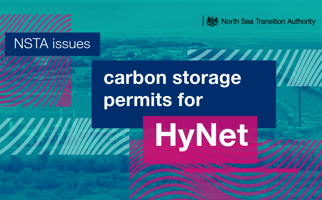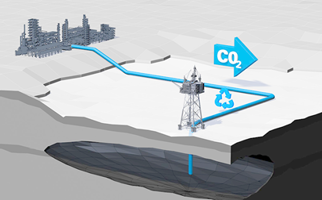
- Energy Hub could power London and the South East for decades
- Hydrogen power will help the drive to net zero emissions
An Oil and Gas Authority (OGA) commissioned study has concluded that an Energy Hub in Bacton could provide low carbon energy for London and the South East for decades to come and help in the drive to net zero greenhouse gas emissions.
The gas fields of the Southern North Sea and the Bacton Gas terminal, in Norfolk, have been part of the UK’s energy backbone for more than 50 years; with offshore wind being part of the mix since 2004.
The study, published today, suggests that a combination of natural gas to make blue hydrogen; wind to produce green hydrogen; ample space offshore for carbon storage, and easy access to markets in London and the South East mean that Bacton could remain crucial to the UK’s energy mix for decades.
The report, produced by Progressive Energy on behalf of the OGA, estimates that hydrogen from Bacton could help to decarbonise up to 20% of the GB population with further potential to contribute to the decarbonisation of London and the South East of England. This hydrogen would have a mixture of domestic, commercial and industrial use, as well as for transportation.
Among the benefits an energy hub in Bacton could bring are:
- Bacton wind farms could produce nearly 40% of the Government’s 40GW by 2030 target. There is potential for very significant hydrogen demand in the Bacton Catchment Area
- By 2030 this could be the equivalent of almost 20% of the Government’s UK wide target of 5GW of low-carbon production by 2030,
- and rising tenfold by 2050.
- Decarbonising energy in the Bacton Catchment Area by using blue hydrogen with Carbon Capture and Storage could result in an emissions reduction equivalent to:
- nearly 15% of the 10-point plan’s target to remove 10MT of carbon dioxide by 2030
- and up to a 70% reduction of the regional emissions by 2050.
- Decarbonising the Bacton Catchment Area could capture carbon dioxide equivalent of:
- 700,000 cars’ worth of annual emission by 2030 and
- equivalent of 8.7 million cars emissions by 2050.
Blue hydrogen is produced using natural gas and currently it is estimated that if this natural gas was used for hydrogen production there could be sufficient reserves in the area to last until the 2040s; with the produced carbon captured and stored offshore from Bacton.
Green hydrogen is produced using renewable energy and electrolysis to split water. There are plans for about 15GW of wind capacity in the area which, if totally committed to green hydrogen production, could meet around half of the total estimated demand in the area by 2050.
Green hydrogen is currently more expensive to produce than blue, but it is expected that as technology matures it will become cost-competitive during the course of 2040.
The area could also see benefits through job creation and the development of technology that could be utilised at home and abroad. There could even be the possibility of working with the regional nuclear plant for the future production of pink hydrogen, which is electricity sourced from the nuclear plant and generated by steam based electrolysis.
Scott Robertson, OGA Director of Operations, said:
“A source of safe, secure and clean power for millions of people and businesses for decades to come, as well as being a boost for jobs and the local economy, all makes this a very exciting prospect.
“We now look forward to working closely with interested parties to thoroughly explore all of the elements involved in making this become a reality.”
The OGA is hosting a presentation on 16 June to share further insights into the report’s findings.
Notes to editors:
1: The OGA Bacton presentation will be held on Wednesday 16th June from 10-11.30am. To register an interest email Bactonenergyhub@nstauthority.co.uk
2: Earlier this year the OGA revised its Strategy to place an obligation on the oil and gas industry to support the UK’s net zero target alongside the existing obligation to maximise economic recovery from the North Sea.
The Strategy reflects the energy transition and requires the industry to step up its efforts to reduce production emissions, support carbon capture and storage projects and unlock clean hydrogen production.
3: The OGA, in collaboration with BEIS, Ofgem and The Crown Estate, published an Energy Integration report in August 2020. The report found that offshore energy integration can deliver 30% of UK’s net zero target. It also highlighted the potential for offshore renewables to contribute around a further 30%. Work has now begun on a follow-up project looking at ways to remove barriers to projects and improve regulatory coordination.
4: The 10-point plan for a green industrial revolution
5: Energy White Paper: Powering our net zero future
For further information please contact:
Tel: 07785 655620


